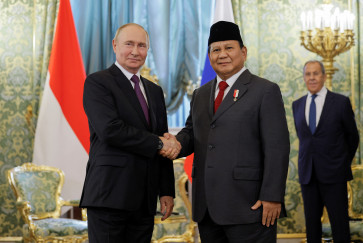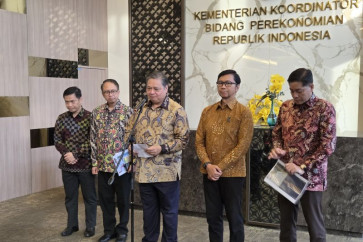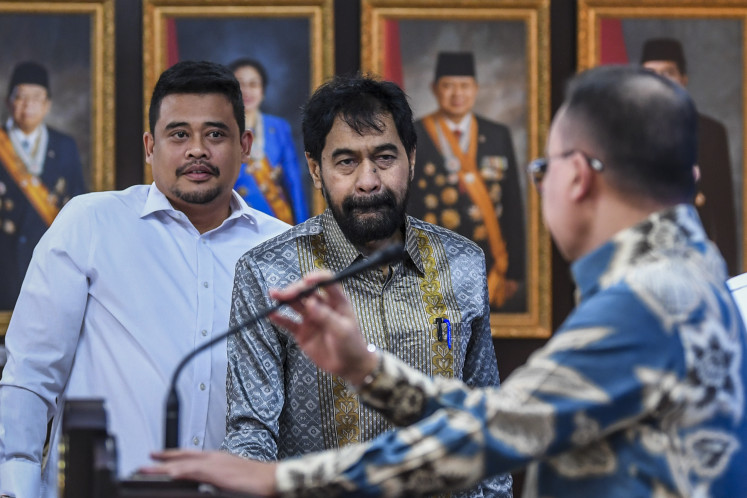Popular Reads
Top Results
Can't find what you're looking for?
View all search resultsPopular Reads
Top Results
Can't find what you're looking for?
View all search resultsInter (cultural) national education: Implications for teaching English composition
International education, an ubiquitous catchphrase in education today, implies intercultural education, the features of which emphasize cross-cultural understanding, tolerance, heterogeneity, appreciation, plurality and inclusiveness
Change text size
Gift Premium Articles
to Anyone

International education, an ubiquitous catchphrase in education today, implies intercultural education, the features of which emphasize cross-cultural understanding, tolerance, heterogeneity, appreciation, plurality and inclusiveness.
However, unless critically scrutinized, these features will become meaningless traits that try only to deceive people for the sake of quenching the thirst for capital.
In the case of English writing pedagogy, for instance, teachers of writing still cling to the prevalent monolingualist assumptions that conceive foreign students' rhetorical convention (i.e. the way one organizes reality) as a big hindrance, hence interference, for the successful attainment of English writing convention.
Their teaching practice is still dominantly shaped by this assumption, perpetuating the privileged status of English rhetorical convention as if it were the most superior to other rhetorical conventions.
There is no other way of emulating English rhetorical convention, except for the students to strictly conform to this convention and discard their way of organizing written thoughts. This is reflected in the textbooks used for the teaching of writing in English, which exclusively adhere to English rhetoric.
Within the framework of inter (cultural) national education, such an imposition to acquiring English rhetorical convention certainly runs counter to the idea of inclusiveness and cross-cultural sensitivity.
On the contrary, it disseminates stereotypes, creating an image of the supremacy of English rhetoric to other rhetorical conventions typical in every culture. It also reinforces the idea of cultural hegemony and exclusiveness.
Such stereotypes are indeed real and widespread among writing teachers who are mostly non-native English speakers, but are pedagogically and politically unarmed to resist the dominant monolingualist assumptions.
English rhetorical convention, for example, is described as direct, linear, systematic and logical, while Asian's is infamously labeled as circular, digressive, non-systematic and full of extraneous narrative. The latter is to be avoided at all costs when one is writing in English, and the former is to be conformed as the sole norm.
International students -- students from multilingual, multiethnic and multicultural backgrounds -- who study in universities overseas are often accused of not being academically ready at best, and intellectually deficient at worst when they write an English academic prose in a way that is not considered linear and direct by their professors.
In a context radically different from theirs, these students are both linguistically and culturally conditioned to write to meet the expectations of their new audiences who share distinct rhetorical conventions.
However, inter (cultural) national education, which values heterogeneity, opposes the idea of imposing specific written conventions on students from diverse cultural backgrounds. It strongly rejects a fixed and static understanding of language and cultural identity. It resists the dominance of exclusive ideology used as a basis for teaching written language.
In writing pedagogy, inter (cultural) national education legitimizes different rhetorical conventions the students bring from their home culture. Inter-linguistic/cultural influence in writing in English is not deemed deviant. Instead, it is seen as a valuable resource that demonstrates the vitality and dynamism of language and culture.
The implications of inter (cultural) national education in teaching particularly English composition in whatever contexts it takes place are then obvious.
First, it will be no more relevant to exhort the student to emulate, for example, linearity in organizing written ideas if they are not accustomed to writing using such a convention in their native languages. Such exhortation denies the uniqueness of students' cultural identity inherent in individual students.
Second, differences in rules and thought pattern organization in written language are not an unwitting error. Students have a variety of strategies in trying what they want to say in order to achieve an effective communicative purpose. Thus, different text constructions can be seen as a depiction of students' creativity motivated by cultural and ideological considerations.
Third, instead of teaching students to focus mainly on adhering rules and rhetorical convention, teachers' main task now is to equip students with effective communicative strategies of rhetorical negotiations. Writing is not just simply a matter of text construction, but it is also a way of expressing one's identities, values and interest. Equipped with these strategies, students are poised to challenge the dominant convention, resist it or modify it to suit their own communicative purposes.
Finally, there should be a flexible means of responding to students' written products. Overzealous attitude of imposing a single correct standard to be adhered to can stifle a student's creativity in communicating intended messages.
Admittedly, cross-cultural writing poses a great challenge for teachers of writing. Not only does it require them to understand the complexities of multilingual students' composing processes, but it also demands that they be ready to accept possible alternatives of style, tone and convention in writing, which may be radically different from English writing convention.
-The writer is chief editor of Indonesian Journal of English Language Teaching and teaches English composition at Atma Jaya University, Jakarta. He can be reached at setiono.sugiharto@atmajaya.ac.id.









